Road to Mac OS X Leopard: iCal 3.0
Apple has made major changes to iCal in Mac OS X 10.5 Leopard, introducing integration with its own new WebDAV-based iCal Server included in Leopard Server. Here's a comprehensive history of software-based calendar applications and a look at what's new in iCal 3.0.
iCal Origins
Beyond accessing a calendar to simply look up the date, the idea of calendaring and organizing event information dates back to 1973, with the release of PLATO Notes by the University of Illinois' Computer-based Education Research Laboratory. Originally designed as a way to track bug reports at CERL, the system developed into a way to organize distributed collections of Notes, secured by permission access lists, organized by date, and eventually shared between other systems.
Developers of PLATO Notes, including Ray Ozzie, Tim Halvorsen, and Len Kawell, later left the university and continued development work at other companies. At Digital, developers from CERL produced a product called DECNotes. Ozzie went to work for Lotus Development.
Desktop Organizer Software
The idea of scheduling and organizing events with desktop PC software dates back to Lotus Agenda (below), a DOS program from 1987 that billed itself as a 'personal information manager' and was commonly described as a "spreadsheet for ideas."
Lotus had earlier released the wildly popular 1-2-3 spreadsheet. The company was founded by Mitch Kapor, an early PC software pioneer who had gotten started at VisiCorp, the maker of VisiCalc, which was both the first computer spreadsheet and the killer app that launched the market for personal computers with the Apple II in 1979.
Lotus Agenda pioneered data organization in a novel way using a flexible database. Users assigned new data entry Items to multiple Categories of their own design. They could then relate together ideas using Filters to search, and present items in Views. This made the system powerful, but its complexity gave it a steep learning curve.
Lotus Notes
In 1984, Ozzie had left Lotus to start Iris, a project funded by Lotus to develop a system similar to PLATO Notes for use on personal computers. The task of migrating Notes' online discussion, email, contact and document directories to the PC was a bit much for PCs of the early 80s; Notes had to devise a way to distribute much of the work to a dedicated server. It also had to roll a lot of its own operating system functionality, since DOS didn't offer much sophistication underneath its applications.
The system was released in 1989 as Lotus Notes 1.0 (below). It ran on both DOS and IBM's OS/2. The new system launched the idea of client/server applications on PCs (as opposed to using a mainframe with attached dumb terminals) and kicked off the concept of groupware: networked collaboration, messaging, group scheduling, centralized contacts, and organized libraries of documents. Notes worked as a system of building blocks for creating integrated, custom corporate applications.
Graphical Calendaring
In 1990, PeopleCube introduced the MeetingMaker calendar for the Mac, which introduced graphical group scheduling. FirstClass (now owned by Open Text) arrived in the same period, delivering distributed messaging and online collaboration for the Mac that grew from origins as a graphical online bulletin board system. In the mid 90s, FirstClass developed into a full groupware system with scheduling features.
In 1992, Lotus released Organizer (above) for Windows, a graphical replacement for Agenda which presented events in handheld planner interface. By the mid 90s, "Personal Information Manager" had become a popular buzzword. While Organizer maintained a clear lead on the PC, there were several competing calendar programs on the Mac:
- Microsoft's 1992 Schedule+ (above) was sold for the Mac and Windows.
- Now's Up-To-Date and Contact.
- Datebook and TouchBase Pro, purchased by Aldus in 1993.
- Claris Organizer (below) appeared in 1995.
Claris Organizer incorporated Calendar, Contacts, Notes, and Tasks into a single interface. Developers of the Palm Pilot organizer were influenced by that design in creating their PDA, and the company later used Claris Organizer as its Palm desktop software on the Mac. Those same concepts would later show up Microsoft's Outlook, which debuted in 1997.
On page 2 of 3: Microsoft Advances into Desktop Calendaring; The Intersection of NeXT, Apple, Claris, and Microsoft; The Arrival of Jean-Marie Hullot's iCal; and Groupware Calendaring.
With the release of Windows 95, Microsoft leveraged its Windows PC software licensing agreements to push vendors to bundle licenses for Office 95 and Schedule+ with new PCs, a move that wiped the leading Lotus Organizer off desktops and into obscurity.
After IBM purchased Lotus Development in 1995, Microsoft was found to have "punished the IBM PC Company with higher prices, a late license for Windows 95, and the withholding of technical and marketing support," according to the findings of fact in the United States vs Microsoft case looking into its PC monopoly.
As noted in Office Wars 4 - Microsoft’s Assault on Lotus and IBM, Microsoft had long been telling its DOS partners to port their applications to OS/2, which helped ensure that its own Office suite would be the only software available when Windows 95 shipped. As a result, Microsoft rapidly transformed itself from a Mac developer into the leading vendor of PC applications within just a few years.
Microsoft halted development of Office on the Mac in 1994, and Apple's platform subsequently began to fall behind. By 1996, all of the momentum in the PC industry had shifted behind Windows and Microsoft, leaving the Mac with an aging portfolio of productivity applications. In 1997, Microsoft replaced its standalone Schedule+ calendar with a combined PIM application that merged email, calendaring, notes, tasks, and contacts into one application: Outlook. Unlike Claris Organizer, it also incorporated a file viewer (below).
The Intersection of NeXT, Apple, Claris, and Microsoft
In order to pull Apple out of its death spiral, one of the first things Steve Jobs did after his return to Apple in 1997 was to kill everything that distracted from the goal of restoring the company's health. Among the casualties were the aging applications of its Claris subsidiary.
Claris Organizer was sold to Palm in 1998, which resold it as Palm Desktop 2.0 in order to improve Mac support for its Palm handheld organizers.
Apple also scuttled the popular Claris Emailer. Jud Spencer, its lead developer, went on to Microsoft's Mac Business Unit to work on Outlook Express and later Entourage, which took over as the Mac version of Outlook after Microsoft's Exchange group canceled Outlook for Mac (below) in 2001. The reason behind the move is explained in the posting Why did Microsoft replace Outlook for Mac with Entourage?
Just prior to shutting down Claris, Jobs negotiated with Microsoft to deliver a new Office for Mac, which was released in 1998. It's not publicly known if Microsoft had any say in the dismantling of Apple's Claris applications or if those apps were simply not worth maintaining by that point. However, it is interesting to note that Jobs originally launched Microsoft into the application market when he invited the company to develop for the Mac in 1982.
Then, after Microsoft packed up its popular Mac applications and migrated them to the PC with Windows in 1991 (and abandoned the Mac in 1994), Jobs brought Microsoft back to the Mac and got it to deliver Office 98, Internet Explorer, Outlook Express, and later Entourage. During that period from 1998 - 2002, Apple was struggling to deliver its new operating system and rebuild the Mac platform, and would have been hard pressed to also deliver a suite of desktop applications on its own.
The Arrival of Jean-Marie Hullot's iCal
After Apple shipped Mac OS X 10.2 Jaguar as the first mainstream release of its new operating system in 2002, it began work on developing a series of its own desktop productivity applications. One of the first was iCal 1.0, which was offered as a free download for Jaguar users later that same year.
The new iCal was unique in that it was not developed at Apple's Cupertino campus, but rather by a group of Apple employees in Paris. The French iCal development team was led by Jean-Marie Hullot, who years earlier had approached Apple with the idea of object-oriented interface development in the late 80s.
While the Mac's graphical interface was easy to use, it was not easy to develop applications for it. Hullot devised a system called Interface Builder for creating a palette of interface elements which could be graphically arranged, then attached to functions. Apple's Jean Luis Gassée invited Hullot to travel to California, but he quickly decided he didn't want to work for Apple. Instead, he shopped his idea around and ended up demonstrating Interface Builder at NeXT, where Jobs hired him immediately.
Interface Builder enabled rapid development on the NeXTSTEP platform, helping to fuel developments such as Tim Berners-Lee's World Wide Web. Hullot also worked on the Application Kit frameworks of NeXTSTEP. After Jobs returned to Apple years later, he invited Hullot to work on a scheduling application using a modern version of Interface Builder and the frameworks he had earlier developed to make application design easy.
The release of iCal 1.0 (below) demonstrated that complex applications with innovative user interfaces could be developed rapidly on the new Mac OS X. It pioneered the concept of displaying the events of multiple calendars together in the same view. It made it easy to publish calendar data to other users or subscribe to shared calendars on the Internet. It also incorporated AppleScript support and could easily import data from other applications.
Apple supported the iCalendar format for sharing calendar data between systems, which had been developed by OpenText, IBM's Lotus, and Microsoft to promote interoperability in communicating free/busy time, processing invitations, scheduling events, and handling to-do lists.
Shortly afterward, Apple released iSync for synchronizing calendar and contact data with mobile phones and Palm devices. By 2004, Palm had abandoned development of its Palm Desktop software, focusing instead on syncing with Outlook under Windows. Apple's move to deliver its own sync solution not only kept the Mac platform afloat in the wake of Palm's jumping ship, but also paved the way toward the development of the iPhone.
Groupware Calendaring
The arrival of iCal and iSync filled a void on the Mac platform for consumers, but iCal didn't provide any support for syncing group calendars with a central server. The market for groupware calendaring had largely been split between IBM's Domino server and its Lotus Notes client on the high end of the enterprise market, and Microsoft's Exchange Server and Outlook client on the low end. Competing against Exchange were a number of calendar and groupware products like FirstClass and Meeting Maker— which Apple itself used for its corporate calendaring— along with a number of Exchange work-alikes, including:
- Stalker CommuniGate
- Kerio MailServer
- Open-Xchange
For Leopard, Apple pulled its iCal development in house, and paired its iCal client with a new calendar server. Rather than trying to develop a monolithic groupware system that integrated calendaring into an email server and directory services, Apple built a standalone calendar server based on the open CalDAV specification. It also announced plans to release its calendar server as an open source project in the same pattern as the Apache web server.
This strategy allowed Apple to focus specifically on the demands of a calendar server, rather than delivering a single product with a wide scope attempting to do a little bit of everything. It also offers the open source community an alternative to emulating Exchange Server. By offering a standards compliant CalDAV server under the Apache license, Apple can use the best existing email server while also sharing its calendar server to the community and Linux administrators, encouraging the adoption of CalDAV.
On page 3 of 3: Leopard's iCal 3.0; iCal Server; An Open Agenda; Lotus Notes, Symphony on Leopard; and I'd Like to Exchange This.
Even home users that have no need for group calendaring will benefit from the new server-side improvements to iCal. That's because Apple didn't just build its iCal Server to fill out a feature check list. It has also begun using it company wide as its own corporate scheduling software in place of Meeting Maker. That means Apple employees are also now using the iCal client, and the result is that iCal itself has progressed rapidly.
Like other Leopard applications, the new iCal drops its heavy brushed metal interface and now clean, lithe, and professional looking (below). It's also blazingly fast. Gone are the sluggish delays that left previous versions less than practical to actually use. It launches immediately, and new appointments can be created and edited just as quickly.
The new iCal drops the slide out drawer previous versions used to display and edit the details of events. In its place, iCal 3.0 pops up an information bubble (above) when events are double clicked upon that can be used to view or edit the event's properties.
From the new Mail, users can create an event in iCal using Data Detectors. Doing so links the event back to the email with a URL. Open the event in iCal, and a single click pulls up the original email. Events also act like email messages. Drag documents, graphics, or even movies to the event, and they are attached as files.
Invite participants to the event, and your attachments are sent to the meeting recipients. To add attendees, simply click the attendees link and start typing names; iCal immediately looks up contacts from your Address Book for matches, and then offers to send out invitations. Users get a clickable file they can use to accept or decline your invitation, and iCal tracks their responses. It's like Exchange Server without maintaining expensive infrastructure and paying for all those Client Access Licenses.
iCal Server
In a group setting using Leopard Server, iCal gets even more sophisticated. You can look up other users' availability (below), book conference rooms, reserve the use of equipment such as an office projector, even delegate your calendar to an assistant to manage.
Because the new iCal Server is open, it works with a number of other clients on other platforms, too. A broad consortium of industry groups have joined to support and contribute toward CalDAV, including developers from Google, IBM's Lotus, Novell, Oracle, PeopleCube, Sun, Kerio, Mozilla, Yahoo, Zimbra, Symbian, and the OSAF.
Mozilla's Sunbird calendar and even Microsoft's Outlook— with the installation of a third party plugin— can be used with iCal Server. Boeing has also developed a CalDAV connector for Exchange Server. Microsoft itself has been quiet about supporting CalDAV. That may be related to the fear that an open market in calendaring would not help the company maintain its dominance over Windows-bound IT shops.
An Open Agenda
In an interesting turn of events, Kapor— the founder of Lotus who delivered the first personal information manager twenty years ago in Lotus Agenda and who funded the development of Lotus Notes— is once again involved in the development of scheduling. Since 1990, Kapor has become known as a socially active philanthropist, co-founding the Electronic Frontier Foundation, founding the Open Source Applications Foundation, and chairing the Mozilla Foundation.
One of the projects of the OSAF is Chandler (below), a new PIM inspired by the old Lotus Agenda. The free, open source project is designed to help users to manage events, messages, and projects from a central dashboard, schedule and coordinate meetings and events across multiple calendars, and collaborate with other users. Chandler is similarly based upon CalDAV, enabling its server and client to work with Apple's iCal and iCal Server in Leopard.
Lotus Notes, Symphony on Leopard
IBM, meanwhile, is porting Lotus Notes 8 to the Mac for release early next year. In the report Lotus Notes Domino 8 coming to Leopard in '08 last month, MacNN reported that IBM executives "described a 'new cachet' surrounding Macs in business, and said they 'see the growth' already underway on an enterprise level."
"We want to get it right," IBM said, "In fact, the version we're currently running (Lotus Notes 8.x build on a Macbook on Flickr) on a widescreen iMac looks better than the Windows release."
IBM is also completing its own distribution of the OpenOffice productivity suite-with Notes integration— under the name Lotus Symphony. Released in beta with a full version due next year, IBM also promises a Mac version for its enterprise users. The suite is free and offered as tool to compete against Microsoft's Exchange Server and Office integration.
I'd Like to Exchange This
Microsoft is also planning to release its next version of Office for Mac early next year. The existing version of Office for Mac is now four years old— the same age as Office 4.x was back in 1997 when Jobs negotiated for the release of a new Office. Interestingly, Ozzie— the lead developer of the original Lotus Notes— is now the chief software architect at Microsoft, having replaced Bill Gates last year.
Mac users already have access to Apple's iWork 08 suite now, and Leopard with the new iCal is just nine days away. Leopard Server and the new iCal Server are also coming out at the same time. Now that Apple has an interoperable product strategy for office scheduling, things are going to get interesting.
Check out earlier installments from AppleInsider's ongoing Road to Leopard Series: iChat 4.0, Mail 3.0, Time Machine; Spaces, Dock 1.6, Finder 10.5, Dictionary 2.0, and Preview 4.0.
 Prince McLean
Prince McLean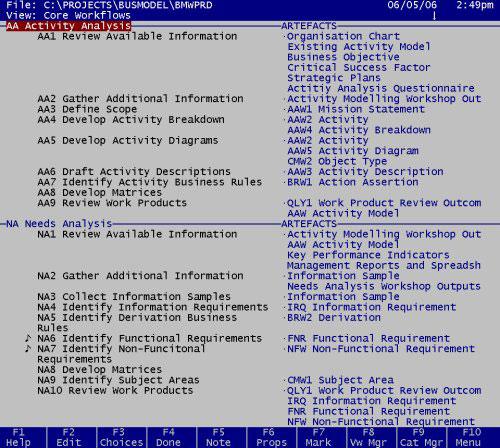
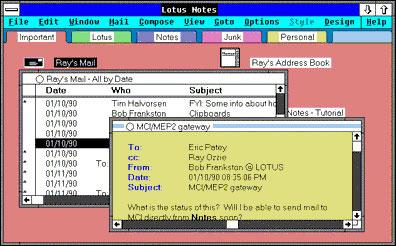
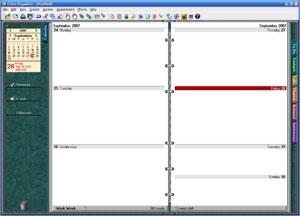
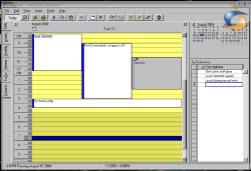
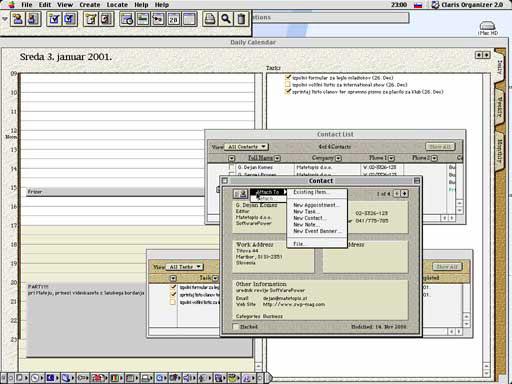
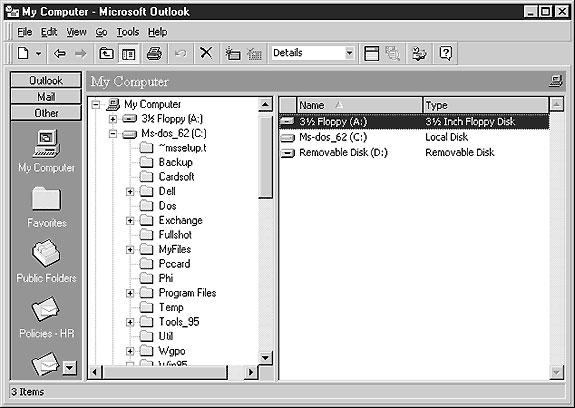
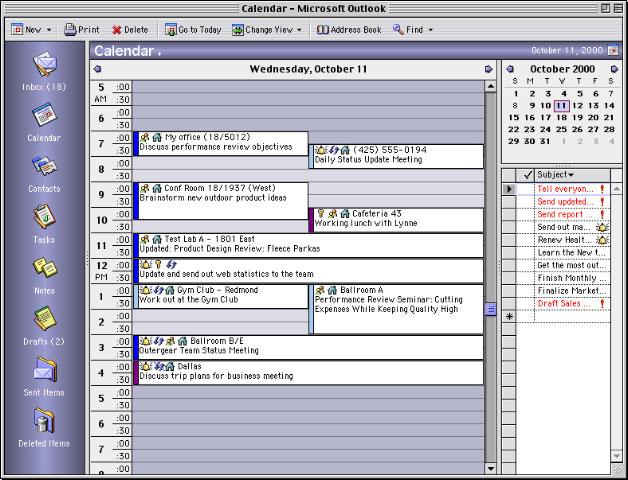
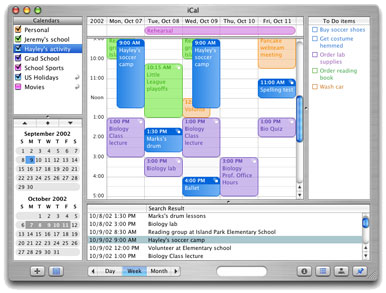
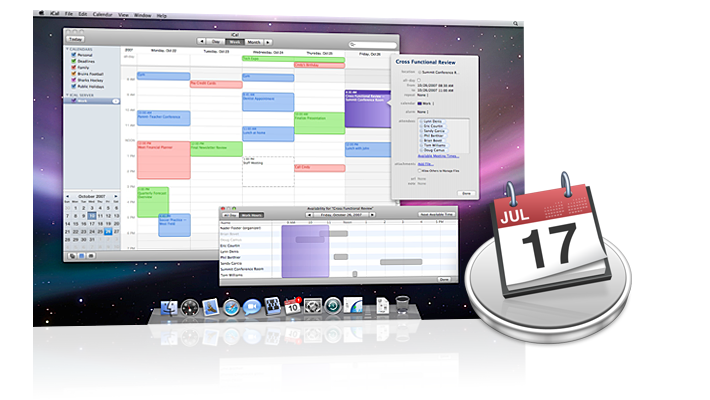

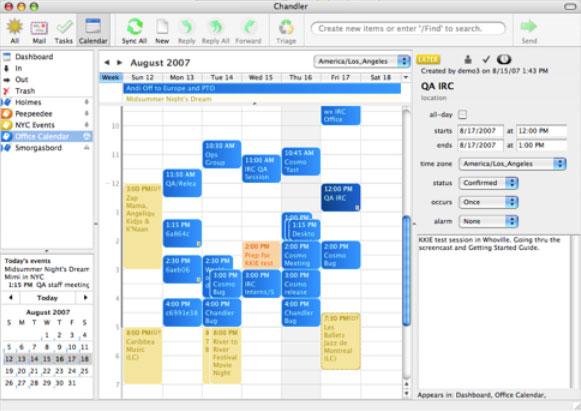











 Mike Wuerthele
Mike Wuerthele
 Malcolm Owen
Malcolm Owen
 Chip Loder
Chip Loder

 William Gallagher
William Gallagher
 Christine McKee
Christine McKee
 Michael Stroup
Michael Stroup
 William Gallagher and Mike Wuerthele
William Gallagher and Mike Wuerthele






